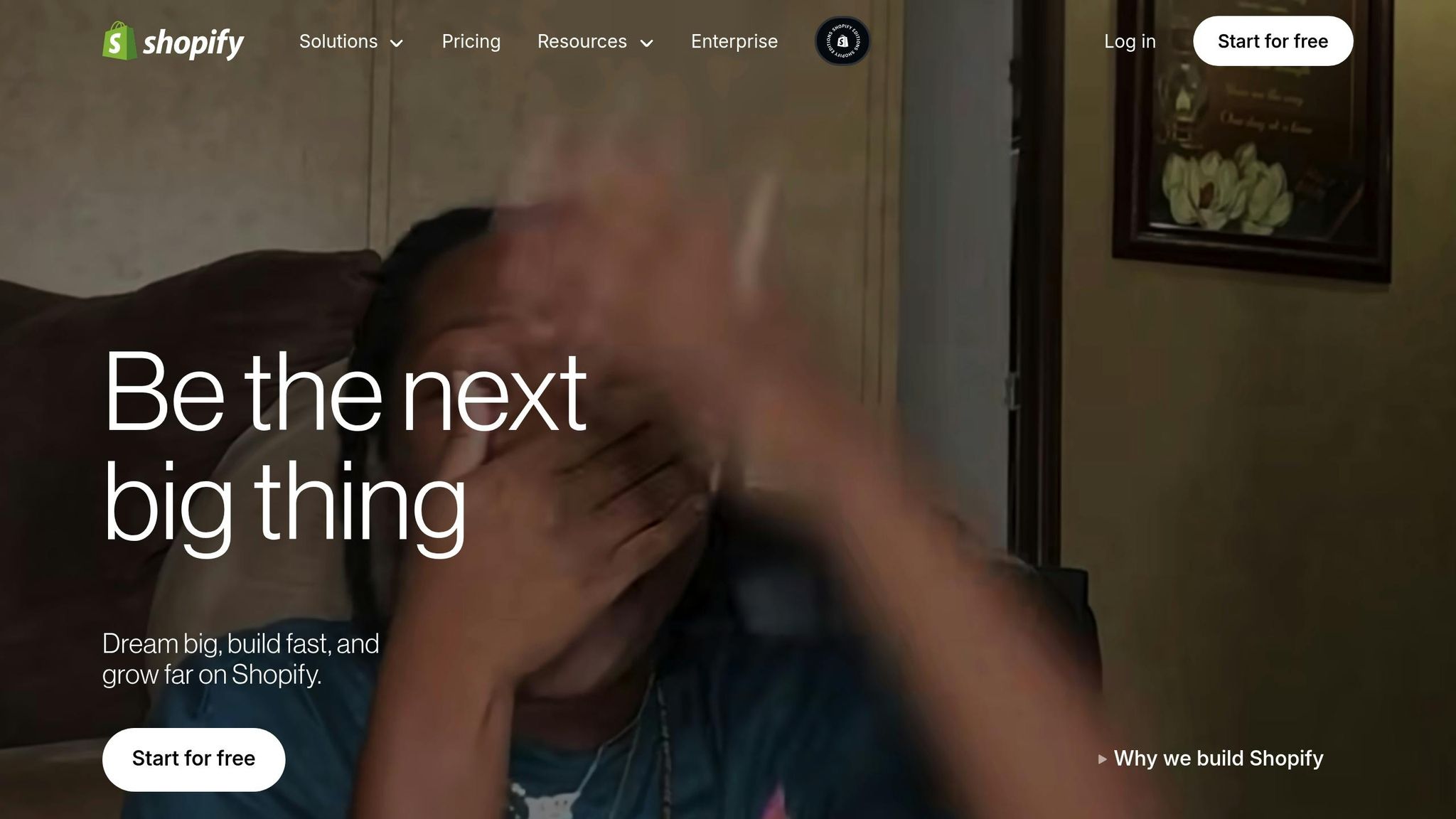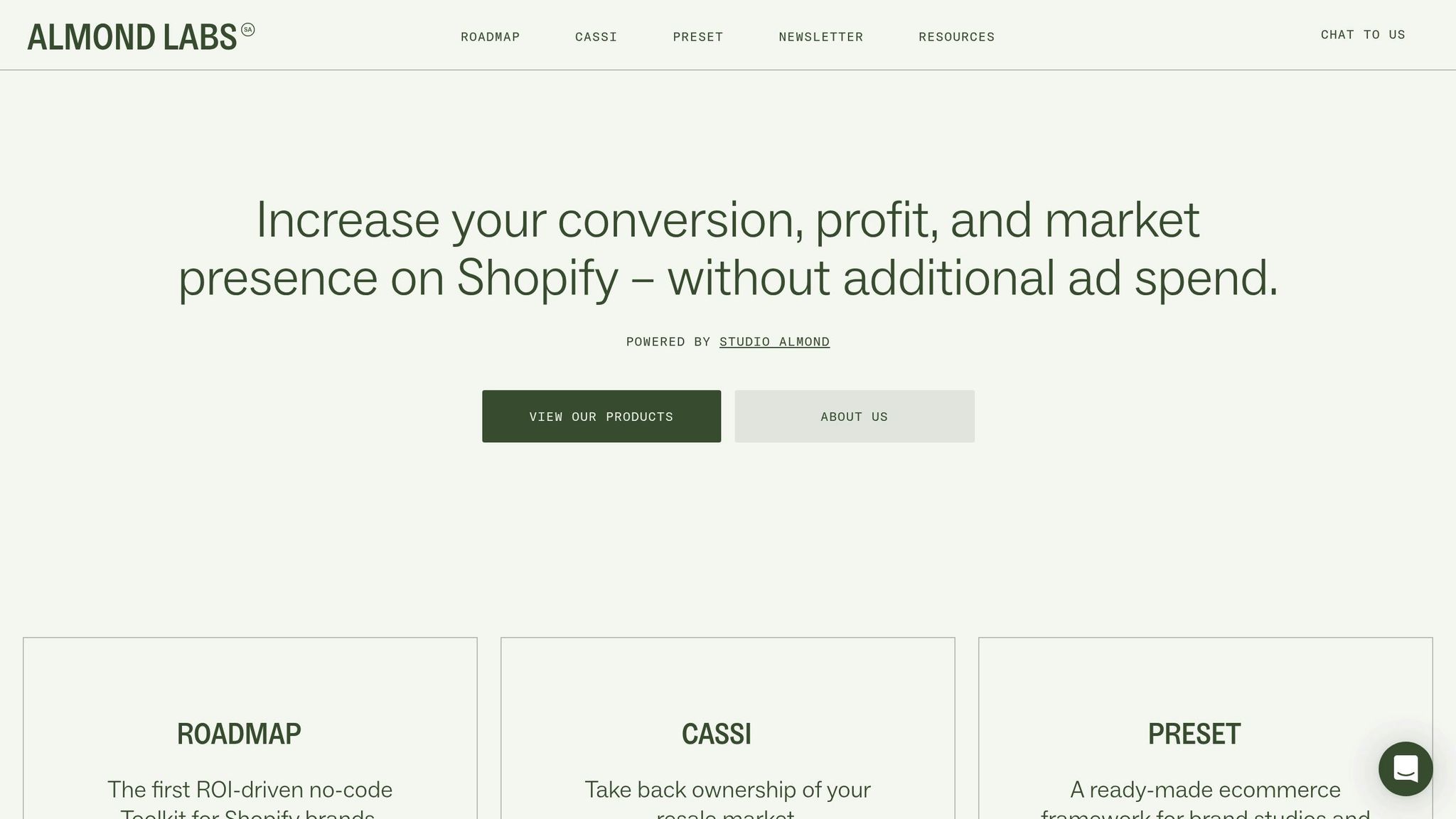
Want to grow your Shopify store in New Zealand? Subscription models can boost your revenue by 5-8x faster than traditional sales. Here's why they work and how to get started:
-
What are Shopify subscription models?
They let you charge recurring fees for products or services. Popular types include:- Replenishment subscriptions: Automate essentials like coffee or skincare.
- Curated subscriptions: Deliver surprise boxes like beauty or wellness items.
- Access subscriptions: Offer exclusive perks like discounts or early access.
-
Why do they matter?
- Predictable income for better cash flow.
- Retain customers who spend up to 67% more.
- Align with consumer demand for convenience and personalisation.
-
How to start?
Use Shopify apps like PayWhirl or Almond Labs' Roadmap to manage subscriptions. Ensure compliance with NZ laws (GST, Consumer Guarantees Act) and offer flexible options like pauses or cancellations.
With subscription revenue expected to hit NZ$539.16 billion globally in 2025, now's the time to act. Read on to learn how to set up, manage, and grow your subscription model effectively.
How to Set Up a Subscription Box for Your Online Shopify Store - Step-by-Step Guide

Types of Subscription Models for Shopify
Let’s dive into the subscription models that can help your Shopify store thrive. These models cater to different customer preferences and purchasing habits. Among Shopify merchants, curation subscriptions are the most popular, chosen by 55%, followed by replenishment subscriptions at 32%, while access subscriptions are on the rise, growing at 13%[3].
Replenishment Subscriptions
Replenishment subscriptions are all about convenience. They automate the recurring purchase of everyday essentials, ensuring customers never run out of products they use regularly. This model is perfect for items like organic skincare or eco-friendly household products - categories that resonate well in New Zealand.
The beauty of this model lies in its predictability. Customers know exactly what they’re getting and when it will arrive. For businesses, this creates a steady revenue stream and eliminates the need for customers to reorder manually. It’s a win-win for both sides.
Now, let’s look at how curated subscriptions bring a sense of discovery and excitement.
Curated Subscription Boxes
Curated subscription boxes are designed to surprise and delight. For a regular fee, customers receive a hand-picked selection of items, making it an excellent fit for industries like beauty, apparel, and food[1][2]. These boxes thrive on the joy of discovery and the anticipation of receiving something new.
In New Zealand, this model has seen great success. Take MyTreat, for example. Since 2016, they’ve been delivering monthly or quarterly boxes filled with natural New Zealand skincare and body products[6]. Their focus? Offering savings on premium products while ensuring customers don’t end up with duplicates.
"It's really like a surprise coming every month. Just brightens my day/week every time they arrive. Thank you to such a wonderful team!" - Tanya H., MyTreat Subscriber[6]
Another standout is Love From You Box, a bi-monthly wellness subscription that emphasises self-care. Their boxes, priced at NZ$75, include 8 full-sized products valued between NZ$150 and NZ$250[7]. This approach highlights how curated subscriptions can offer both value and a touch of indulgence.
Curated models also excel at introducing customers to products they might never have discovered otherwise. As one MyTreat subscriber shared:
"I love the introduction to various products that are local and cost-effective." - Reinet G., MyTreat Subscriber[6]
For Shopify brands, storytelling is crucial in this model. For instance, Book Box tailors its offerings by hand-picking books for adults, young adults, and children, with options that include chocolate or tea for a personalised touch[8].
Membership or Access-Based Subscriptions
Shifting gears from physical products, access-based subscriptions focus on offering exclusive perks and experiences. These memberships grant subscribers benefits like special discounts, early access to new products, or members-only items[1]. The goal? Building loyalty by offering something unique that non-subscribers can’t access[4].
This model opens up exciting possibilities for New Zealand brands. Imagine a Māori cultural brand offering exclusive content, early access to limited-edition products, or members-only workshops on traditional practices. It’s a way to create a strong sense of community while celebrating local heritage.
Access subscriptions also work well for brands with a focus on education or community engagement. For example, an eco-conscious clothing brand could offer early access to new collections, exclusive sustainability reports, or virtual events with environmental experts.
What sets this model apart is its flexibility. Unlike replenishment or curated subscriptions, which rely on delivering physical items, access subscriptions can include digital benefits, experiences, or services. This makes them a powerful tool for strengthening customer relationships.
As the fastest-growing subscription model[3], access subscriptions reflect a shift toward experiences and exclusivity. For New Zealand businesses, this is an opportunity to tap into the country’s unique culture and values, creating compelling memberships that resonate both locally and globally.
Setting Up Subscription Models on Shopify
Get your Shopify subscription model up and running by choosing the right tools, ensuring local compliance, and creating a seamless experience for your customers.
Choosing the Right Tools for Subscription Management
Shopify provides several ways to manage subscriptions, starting with its built-in Subscriptions app, which covers basic needs for launching subscription services[15]. For businesses that require more advanced features, the Shopify App Store offers a variety of third-party apps with different capabilities and pricing options[16]. For instance, Better Tea Co, a New Zealand-based tea company, uses PayWhirl Subscriptions to handle recurring orders and offer flexible services[16].
When selecting the best tools for your business, think about your specific needs. For example, Almond Labs' Roadmap offers a no-code solution that simplifies creating and managing subscription campaigns, even for those without technical expertise. If you’re looking to set up straightforward replenishment subscriptions, Shopify’s native app might do the trick. On the other hand, curated subscription boxes or membership models may benefit from more advanced apps that provide greater customisation and analytics capabilities.
Once you've chosen your tools, the next step is to configure local payment options, GST compliance, and shipping to ensure a smooth operation.
Configuring Payment, GST, and Shipping
To cater to New Zealand customers, your payment setup must comply with local regulations and expectations. If your annual turnover exceeds NZ$60,000, you’ll need to register for GST and clearly state whether your prices include GST[9][10].
Choosing the right payment methods is key to maximising conversions. In 2023, cards accounted for 57% of e-commerce transactions in New Zealand, with credit cards alone making up over a third of that figure. Meanwhile, Buy Now, Pay Later services represented nearly 12% of payments[10]. Stripe is a popular option for New Zealand businesses, as it’s GST-registered and automatically generates tax invoices on a transparent, pay-as-you-go basis[10]. Keep in mind that while you can add surcharges for certain payment methods like credit cards, at least one no-surcharge payment option must be available[10].
For shipping, Shopify Shipping integrates seamlessly with your store and provides discounted rates from major carriers[11]. Given that 62% of customers are unlikely to buy from retailers that don’t offer free shipping[12][13], consider building shipping costs into your subscription pricing. Make sure your product listings include accurate size, weight, and location details to calculate shipping rates correctly[11]. Additionally, offering local pickup or delivery options in key areas can enhance convenience for your customers.
With your tools and compliance sorted, you can now focus on providing an intuitive and localised experience for your subscribers.
Improving the Customer Journey
A well-thought-out operational setup is essential for keeping subscribers happy and loyal. Your checkout process should clearly outline subscription details, such as billing frequency, cancellation policies, and product expectations, so customers know exactly what they’re signing up for. A smooth onboarding process can go a long way in boosting retention.
Make sure your checkout and account registration forms align with New Zealand conventions, including appropriate postcode fields and region options. Clearly communicate processing times and delivery schedules, as subscribers tend to have specific expectations for regular deliveries[14].
To avoid disruptions, use inventory management systems that can predict demand based on subscriber numbers and automatically adjust stock levels. This helps prevent issues like missed shipments due to stock shortages. Additionally, offering self-service options - such as the ability to change delivery dates, skip shipments, or update preferences - can reduce the strain on your customer service team while improving the overall experience.
Under the Privacy Act 2020, businesses must safeguard customer data, including payment details[10]. Make sure your subscription setup includes strong data protection measures and clear policies about how customer information is used and stored. Be prepared for potential disruptions, such as weather delays or seasonal carrier bottlenecks, and keep your customers informed to maintain their trust throughout the subscription process.
Retention and Growth Strategies for Subscriptions
Keeping subscribers engaged requires sharp data insights, tailored experiences, and flexible options that evolve alongside your customers' needs.
Using Data to Predict and Reduce Churn
Understanding what prompts customers to cancel their subscriptions is key to keeping them on board. Customer churn - the percentage of subscribers who cancel during a specific timeframe - can be significantly reduced with proactive strategies. Research indicates that resolving issues during the first customer service interaction could prevent 67% of churn cases[17].
Subscription businesses in New Zealand have a slight edge, with an average churn rate of 5.2%, noticeably lower than the global average of 7.44%[23]. Even so, improving customer retention by just 5% can lead to profit increases ranging from 25% to 95%[18].
Tools like Almond Labs' Roadmap are invaluable for tracking subscriber behaviours and identifying those at risk of cancelling. For example, set up alerts for customers who skip deliveries, reduce their order frequency, or frequently reach out to support. These triggers allow for timely, personalised outreach.
It's also important to tackle both voluntary churn (customers actively cancelling) and involuntary churn (often caused by failed payments). About 20–40% of churn falls into the latter category[19]. Automatic retry systems for failed payments and reminders for expiring credit cards can help minimise these losses. Considering that 62.6% of retail purchases are made with credit cards[19], creating detailed customer profiles that track purchase history, engagement, and support interactions can reveal patterns that predict potential cancellations.
By leveraging these data-driven strategies, you can build a stronger foundation for long-term subscriber relationships.
Encouraging Long-Term Commitments
Subscribers who stick around for the long haul are incredibly valuable. Though they make up only 21% of the customer base, they account for 44% of total revenue and 46% of orders[20]. To encourage these long-term commitments, offer compelling incentives for prepaid annual subscriptions. Perks like free shipping - something 68.2% of online shoppers find appealing[18] - can sweeten the deal, alongside exclusive benefits like early access to limited-edition products or priority customer service.
Introducing tiered subscription levels that reward loyalty can also be highly effective. These tiers allow customers to choose options that suit their needs while incentivising longer commitments. Tying promotions to local events, such as Matariki, can further drive engagement and encourage customers to stay subscribed.
Improving the Subscriber Experience
A great subscriber experience goes beyond incentives and data - it’s about making customers feel valued and understood. Personalisation plays a huge role here. Nearly half (49%) of customers are more likely to make repeat purchases when they experience personalised service, while 32% will walk away after just one poor interaction[22].
Digital tools can elevate the experience further. For instance, Almond Labs' Cassi platform offers buy-back options for products that don’t quite meet expectations, easing concerns about committing to regular deliveries. Additionally, smart product recommendations based on past purchases and preferences can make the experience feel more tailored - whether it’s suggesting a favourite coffee blend or a beauty product that’s received positive feedback.
Flexibility is another cornerstone of a great subscription experience. Offer options to pause deliveries during holidays, adjust delivery schedules, or swap products within a subscription tier to accommodate changing needs.
Building a sense of community can also enhance loyalty. Consider creating exclusive online groups, hosting virtual demos, or sharing educational content. Some brands even host special events or virtual hangouts exclusively for subscribers, fostering a deeper connection[23].
Finally, ensure customer support is accessible across multiple channels - live chat, email, and phone - and resolve issues quickly. Self-service options, like a detailed knowledge base, can further streamline the experience.
To maintain engagement between shipments, SMS marketing is a powerful tool. With an impressive 98% open rate and 95% of messages read within three minutes[21], SMS can be used to notify subscribers about deliveries, share product tips, or highlight exclusive offers. Regularly tracking metrics such as repeat purchase rates, average order values, and customer service interactions will help you refine your subscription model and address churn before it becomes a problem.
sbb-itb-f46a14b
Compliance and Best Practices for Subscription Models
Adhering to New Zealand's legal standards and maintaining transparent practices is essential for protecting your subscription business while fostering trust with your customers.
Following Legal Requirements
Subscription businesses in New Zealand must operate within the framework of key legislation, including the Consumer Guarantees Act (CGA), the Fair Trading Act (FTA), and the Privacy Act [24][25]. These laws are designed to safeguard consumers and promote fair trading.
The Consumer Guarantees Act requires that all products and services meet the promised quality, purpose, and description. For subscription services, this means every product in a recurring delivery must meet these expectations. Services, too, must be carried out with reasonable care and skill [25].
"The Consumer Guarantees Act (CGA) protects consumers and provides a fair and effective system for consumers and businesses to trade confidently." - Consumer Protection [24]
The Fair Trading Act ensures that all claims made about your subscription service are truthful and substantiated. Misleading advertising or false representations are strictly prohibited [26].
"The Fair Trading Act (FTA) exists to: promote fair competition; make sure consumers get accurate information before buying products and services; promote product safety." - Consumer Protection [26]
The Privacy Act governs how businesses collect, store, and use customer data. Subscription businesses often handle sensitive customer information, such as payment details and delivery preferences. It’s critical to collect only what is necessary, keep data secure, and offer customers the ability to access, correct, or delete their information [25].
To remain compliant, focus on the following:
- Represent products and services accurately.
- Display GST-inclusive pricing clearly [25].
- Train your team on refund and guarantee obligations.
It’s important to note that businesses cannot contract out of these legal obligations - even in business-to-business agreements. For instance, a "no refunds" policy is not enforceable under New Zealand law [24][26].
With these legal requirements in place, transparent policies and clear communication can further strengthen customer trust.
Clear Policies and Communications
Beyond legal compliance, transparent communication plays a key role in building trust with your customers. Clear and accessible policies help ensure customers understand the terms of your subscription service.
For Shopify merchants, it’s essential to provide accurate contact information, such as your business name, email, phone number, and physical address [27]. Refund policies should be detailed and include specifics like return timeframes, return addresses, who covers return costs, and how to contact your team for refund enquiries. Make sure this information is easy to locate on your website - hiding critical details in fine print can lead to legal trouble.
Be upfront about fulfilment timelines and cancellation policies. Misleading claims about product performance, marketing promises, or pricing are not only unethical but can also violate the Fair Trading Act [27]. Even product images should reflect reality - overly edited or misleading photos can create false expectations [26].
Pay special attention to cancellation policies. Refunds cannot be subject to unreasonable conditions or arbitrary timeframes that conflict with consumer law.
"Businesses should not say they don't give refunds, or put conditions on refunds, such as set time frames. Businesses also cannot limit their obligations to the terms of a store or manufacturer's warranty." [24]
Make sure your customers are aware of key details, such as automatic renewals, price changes, and digital content standards. Promptly addressing complaints and concerns also demonstrates your commitment to quality service [25][28].
Using Almond Labs for Subscription Success

Almond Labs equips Shopify brands with two standout tools: Roadmap, a no-code subscription campaign builder, and Cassi, a platform that transforms returns into revenue. Together, these tools help brands cut development costs and improve customer lifetime value. By tackling challenges like customer engagement and efficient development, Almond Labs provides practical solutions that align seamlessly with strong retention strategies, enhancing every step of the subscription journey.
Building Campaigns with Roadmap
Roadmap is an all-in-one subscription management platform designed to drive higher conversions and profits. It combines loyalty programmes, reviews, subscriptions, and analytics into a single system - eliminating the need for costly custom development. For instance, brands have collectively saved over NZ$417,000 in development costs, with one business reducing annual commissions by NZ$86,000, boosting customer lifetime value by 8.4%, and increasing sign-ups by 14.6% [29].
Because Roadmap integrates its features into a unified platform, brands can create more sophisticated campaigns and access advanced analytics without hassle. In some cases, Roadmap has powered up to 50% of a brand's online sales. Additionally, Almond Labs offers quarterly two-hour workshops, collaborating with brands to plan revenue-driving activations. Brands can also suggest new features, ensuring the platform evolves to meet their needs. This synergy of tools and insights not only improves campaign performance but also lays the groundwork for deeper data analysis, as explored below.
Managing Returns with Cassi
Handling returns and retaining customers after cancellations are common hurdles for subscription businesses. Cassi tackles these challenges by enabling brands to reclaim their resale market and create new revenue streams. Through Shopify, businesses can offer buy-back and consignment options, rewarding sellers with points, discounts, or cash - keeping them engaged rather than losing them to third-party resale platforms.
"Brands will soon have complete ownership and be able to redeem sellers with points, discounts or money all via their own store. Turn those thousands of customers on Facebook Marketplace, or any other 3rd party platform into your next revenue stream."
- Alex M., MD of Studio Almond & Almond Labs [30]
"The future of retail is circular. ♻️ More brands are embracing resale, but many still rely on third-party platforms, losing control of their customers and margins. What if you could own your resale market and reward sellers - all within your store? That's exactly what our consignment buy-back app does."
- Gina Kelly, General Manager at Studio Almond [31]
This approach creates valuable re-engagement opportunities. For example, a customer who cancels their subscription might still participate in the buy-back programme, staying connected to your brand while contributing to a circular retail model. With sustainability becoming increasingly important to New Zealand consumers, this strategy resonates strongly. Currently in private beta, Cassi is set for a full launch in Q2 2025, with early access available for brands looking to test and refine the platform.
Analytics and Improvement
As subscription businesses grow, leveraging data becomes essential. Roadmap offers powerful analytics tools that go beyond basic metrics, providing insights into the entire customer journey. By integrating with tag libraries and tracking features like gift-with-purchase campaigns, Roadmap pinpoints which touchpoints deliver the most value.
The quarterly strategic sessions further help brands interpret their data, focusing on key metrics to refine pricing, product offerings, and retention strategies. For businesses using both Roadmap and Cassi, combined analytics provide a holistic view of customer lifetime value, tracking transitions between subscriptions, purchases, and resale behaviours. This comprehensive data-driven approach supports smarter retention strategies and paves the way for sustainable growth.
Conclusion
Subscription models bring Shopify brands in New Zealand the kind of predictable revenue and deeper customer relationships that traditional one-off sales simply can't achieve. With four out of five New Zealanders already subscribing to at least one service, the demand is undeniable [5]. This creates a prime opportunity for businesses to adopt strategies and tools that can turn this demand into meaningful growth.
Brands using subscription models see revenue growth up to five times faster than those sticking to traditional sales methods [32]. Plus, 64% of consumers feel more connected to brands they subscribe to compared to those they interact with through one-off purchases [33].
"The subscription business model provides predictable revenue and promotes customer retention through recurring payments. This model allows businesses to create personalised experiences and build loyal customer relationships." [1]
The key to success lies in choosing the right subscription type. Whether it's replenishment subscriptions for everyday needs, curated boxes offering discovery and surprises, or membership models that grant exclusive perks, tailoring your approach to your audience is essential.
Platforms like Roadmap and Cassi, mentioned earlier, make implementing these models much simpler. Roadmap cuts out the hassle of custom development, offering robust analytics and campaign management tools. Cassi, on the other hand, focuses on keeping customers engaged with creative solutions like buy-back and consignment programmes, even after a subscription ends.
Another critical factor is compliance. The regulatory environment in New Zealand demands attention to details like GST obligations, clear cancellation policies, and transparent communication. Meeting these requirements isn't just about avoiding penalties - it’s an opportunity to build trust and credibility with your customers.
The subscription economy is only set to grow. By 2028, global online subscriptions are projected to reach a staggering NZ$2.3 trillion [1]. For New Zealand brands, this marks a chance to grab market share, increase customer lifetime value, and future-proof their businesses.
The path forward is clear: start with a well-defined strategy, leverage the right tools, and focus on delivering an exceptional customer experience. For Shopify brands in New Zealand, subscription models could be the game-changer that drives stronger relationships and sustained growth.
FAQs
How do I make sure my Shopify subscription model meets New Zealand's legal requirements?
To ensure your Shopify subscription model aligns with New Zealand's legal requirements, there are a few important regulations to keep in mind.
First, you’ll need to comply with the Consumer Guarantees Act (CGA) and the Fair Trading Act (FTA). These laws ensure that your products or services meet acceptable quality standards, are accurately described, and come with clear, transparent terms. This includes outlining cancellation policies and recurring charges in a way that's easy for customers to understand.
Next, the Privacy Act requires you to have a straightforward privacy policy. This policy should clearly explain how you collect, use, and safeguard your customers’ personal data. Transparency here is key to maintaining customer confidence.
Lastly, don’t forget about Goods and Services Tax (GST). Subscription services in New Zealand are generally subject to a 15% GST, so make sure you’re correctly accounting for this in your pricing and invoices.
By following these steps, you’ll not only meet legal obligations but also build a stronger foundation of trust with your customers.
What are the main types of subscription models available for Shopify stores?
Shopify offers three subscription models, each catering to different customer preferences and product types:
-
Replenishment subscriptions: This model is perfect for everyday essentials like groceries or personal care products. It allows customers to receive these items at regular intervals, saving them the hassle of reordering manually. It’s a great fit for products that are used up quickly and need frequent replacement.
-
Curated subscriptions: Designed to surprise and delight, curated subscriptions deliver a personalised or themed selection of products. This model is especially popular in industries like beauty and fashion, where customers enjoy discovering new and exciting items.
-
Access-based subscriptions: This option provides members with exclusive perks, such as premium products, special services, or discounts. It’s particularly suited for higher-value items that are purchased less frequently, helping to build customer loyalty through added benefits.
Choosing the right subscription model depends on your product offerings, what your customers value most, and your overall business objectives.
How can I use data insights to reduce customer churn and keep subscribers loyal on my Shopify store?
To keep your Shopify subscribers loyal and reduce churn, start by digging into key metrics like customer lifetime value (CLV), churn rate, and retention rate. These numbers can reveal patterns behind cancellations, giving you the chance to address issues before they escalate. For instance, predictive analytics can flag customers who might be considering leaving, so you can step in with personalised offers or timely support.
Customer feedback and purchase history are also goldmines for crafting tailored communication strategies. Use this information to create targeted email campaigns or exclusive deals that remind subscribers why your brand is worth sticking with. Automated emails triggered by customer actions - like renewal reminders or loyalty rewards - can further boost satisfaction and retention. By prioritising these personalised connections, you’ll not only minimise churn but also strengthen the bond with your customers.
Heading 1
Heading 2
Heading 3
Heading 4
Heading 5
Heading 6
Lorem ipsum dolor sit amet, consectetur adipiscing elit, sed do eiusmod tempor incididunt ut labore et dolore magna aliqua. Ut enim ad minim veniam, quis nostrud exercitation ullamco laboris nisi ut aliquip ex ea commodo consequat. Duis aute irure dolor in reprehenderit in voluptate velit esse cillum dolore eu fugiat nulla pariatur.
Block quote
Ordered list
- Item 1
- Item 2
- Item 3
Unordered list
- Item A
- Item B
- Item C
Bold text
Emphasis
Superscript
Subscript




